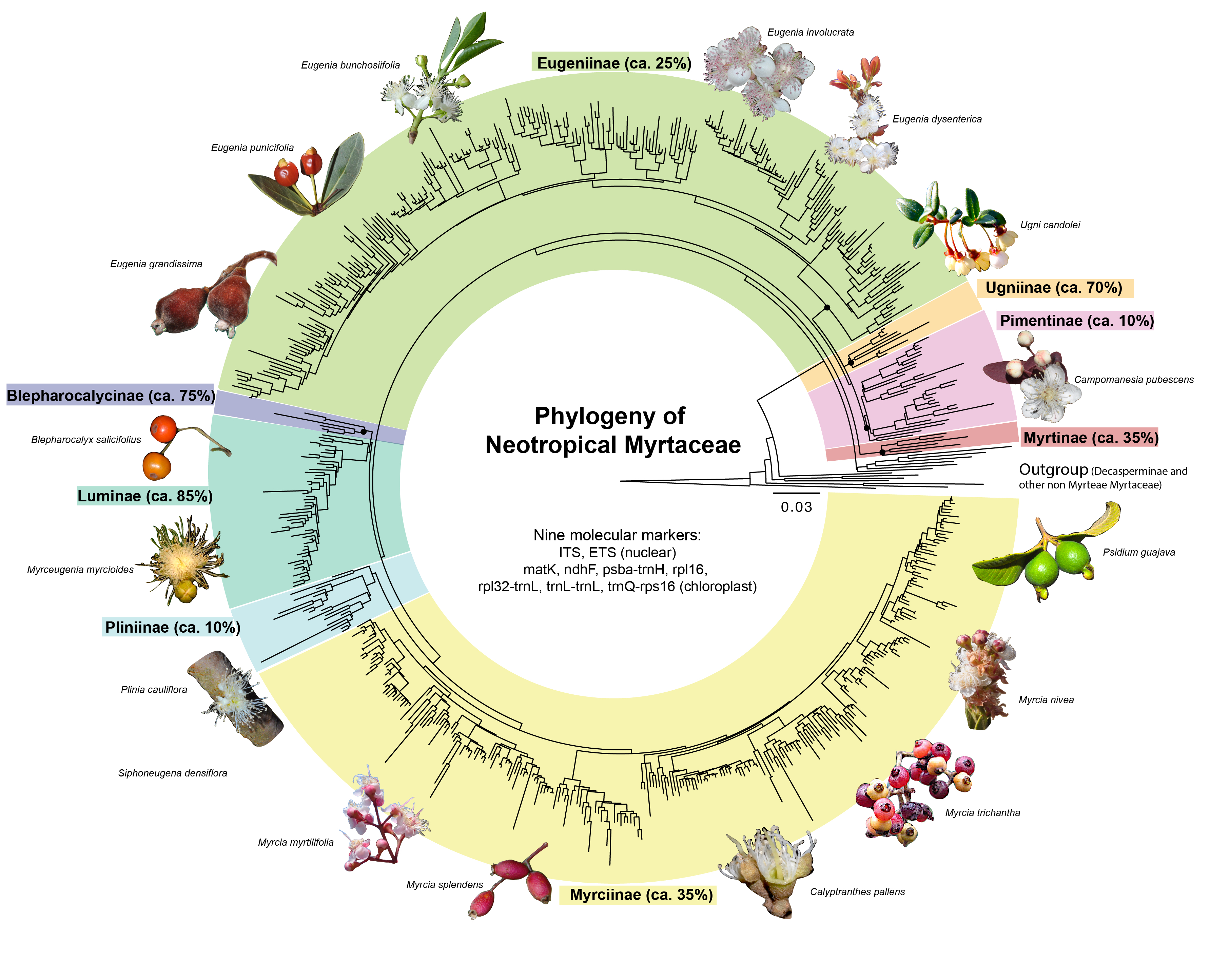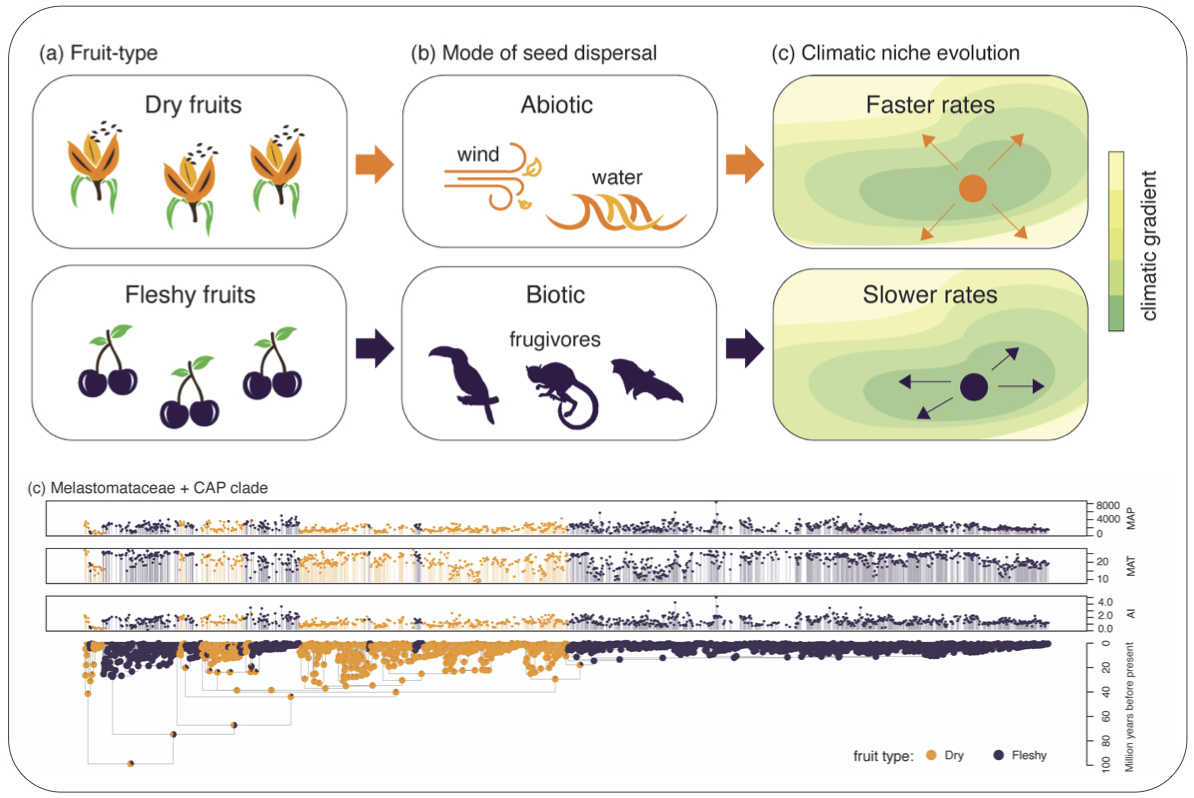

Welcome!
We are botanists at the Department of Ecology and Evolutionary Biology, University of Michigan - Ann Arbor!



Our research
Currently, research in our lab is focused on two key areas:

Phylogeny of Myrteae – Neotropical Myrtaceae
Working Group (2024) Am.J.Botany
Systematics, evolution, and ecology of Myrtaceae
We study plant ecology and evolution in understudied tropical regions, with a particular focus on neotropical myrtles (tribe Myrteae, Myrtaceae). We use a range of methods and data including trait measurements, biogeographical analyses and phylogenetic inferences to gain a comprehensive understanding of how the environment has influenced the evolution of this plant group and how different Myrteae lineages are related to one another.


Linking seed dispersal traits and climatic niche
evolution in plants - modified from Vasconcelos et al. (2023) J.
Biogeography
Discovering the rules of plant biogeography using a trait-based approach
We use natural history collections and trait characterization tools to gather large sets of occurrence data and functional traits. These datasets are then combined with molecular phylogenies and phylogenetic comparative methods to quantify the correlation between traits and environments throughout the evolution of flowering plants. Our goal is to utilize trait-environment correlation analyses to uncover general patterns in plant biogeography by measuring how unrelated plant lineages have evolved similar traits in response to a specific environment.